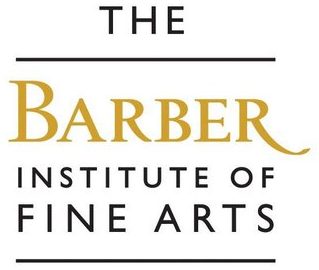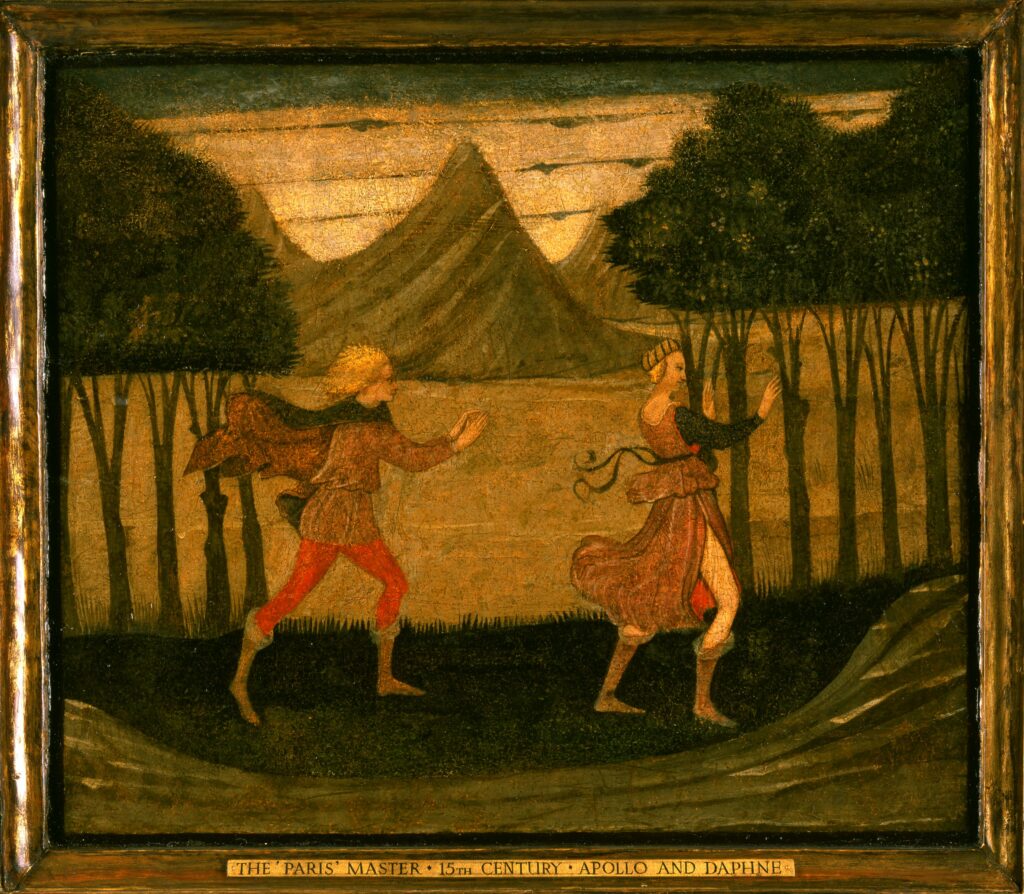Florentine School
Daphne Pursued by Apollo/The Metamorphosis of Daphne
Florence, about 1440-50
Tempera on wood
47.4 x 53.1 cm
Content warning – includes themes of sexual violence
The mythological character Daphne flees from Apollo’s non-consensual pursual of her. Terrified, she turns into a tree to escape his clutches.
These are the end panels of a cassone (a marriage chest). Rather than be viewed side-by-side, they would have originally bookended other mythological scenes on the front and back of the chest. The motive behind painting this story on a wedding object is unclear, but it reveals how mythological stories of rape were romanticised during the Renaissance.
Based on the small differences in the way the garments and trees are painted, we can deduce that the panels were created by two unknown Florentine artists. They have been closely linked to the anonymous Master of the Judgement of Paris, who was known for his decorative furnishings. The naive style makes the scene inappropriately light-hearted to modern eyes.
A nineteenth-century lithograph in the Barber’s collection depicts the same subject matter in a different way. Daphne is represented as an idealised, classical nude sculpture. This objectifying interpretation is exaggerated by Apollo’s strong grasp around her. Daphne is in the process of metamorphosising into a tree; notice how her legs are turning into a trunk.
Visual artist Sarah Taylor Silverwood created the Daphne installation as a contemporary commentary on the Daphne and Apollo story. The unity of sculpture, animation and soundscape reveal how the chase of Daphne has been repeated and replayed in culture, famously in the never-ending chase between Wylie Coyote and the Road Runner.
Purchased 1950 (Nos.50.7a and b)
Further reading:
Even, Yael, ‘Daphne (without Apollo) Reconsidered: Some Disregarded Images of Sexual Pursuit in Italian Renaissance and Baroque Art’, Studies in Iconography, 18, 1997, pp. 143-59.
Freedman, Luba, ‘Apollo and Daphne by Antonio del Pollaiuolo and the Poetry of Lorenzo de’ Medici’, Memoirs of the American Academy in Rome, 56/57, 2011-12, pp. 213-42.
Marquand, Allan, Exhibition of Early Italian Art from 1300 to 1550, London, 1893-94, p. 20.
Ovid, Metamorphoses, trans. A. S. Kline, Michigan, 2004, p. 14.
Pudelko, Georg, ‘The Minor Masters of the Chiostro Verde’, The Art Bulletin, 17/1, 1935, pp. 71-89.
Schubring, Paul, Cassone: Truhen und Truhenbilder der italienischen Frührenaissance, Leipzig, 1915.
Schubring, Paul, ‘Cassoni Panels in English Private Collections – II’, Burlington Magazine for Connoisseurs, 22/119, 1913, pp. 196-220.


